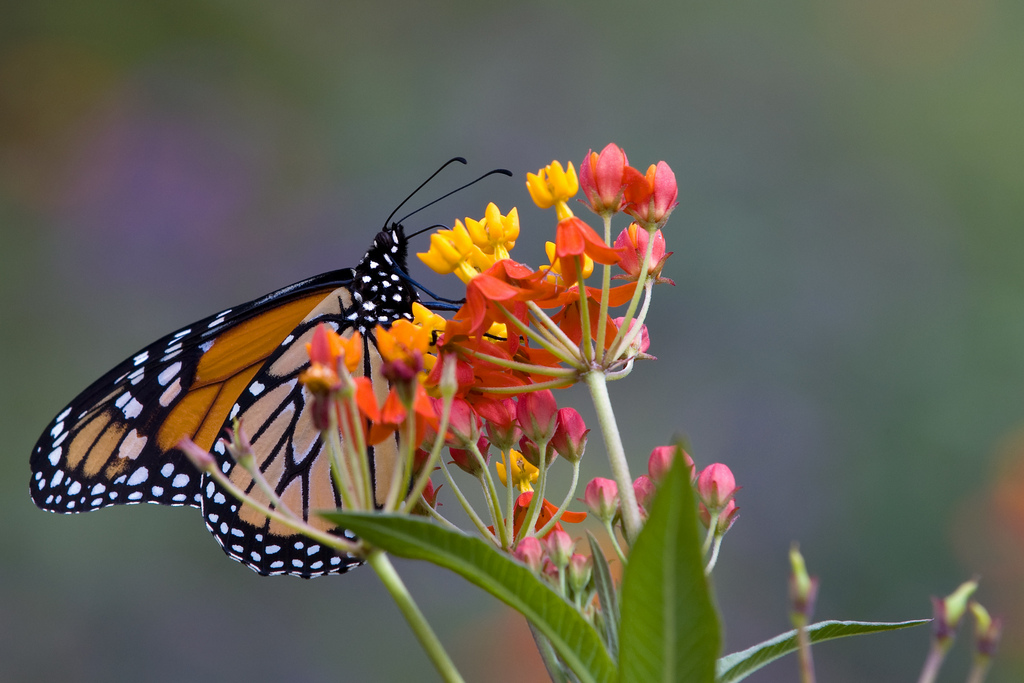Please note: Osher Rainforest will be closed for maintenance Jan. 14–16.
Science News
Monarch Diet and Migration
April 5, 2014
by Molly Michelson

Monarch butterflies (Danaus plexippus) migrate thousands of miles over several generations each year. Because this requires so much energy, the insects rely on access to food during early stages of growth so that they can develop the necessary characteristics to safely complete the trek, including appropriate wing shape and coloration.
A previous study, led by Andy Davis of the University of Georgia, demonstrated that wing color makes a difference to monarch flight. According to the publication, “Results showed that monarchs with darker orange (approaching red) wings flew longer distances than those with lighter orange wings.”
For a recent study, researchers, including Davis, wondered how food affects color and wing size. For their experiment, the researchers deprived late-stage monarch larvae of milkweed and later measured the effect on the adults’ wing size and coloration. The scientists chose this stage because, according to their paper, “In animals with complex life-styles [think of the different stages from egg to larvae (caterpillar) to pupae to butterfly], all resources needed to form adult tissues are procured at the larval stage.”
The team created three test groups: those with no food restriction, those with 24-hour food restriction (low-stress), and those with 48-hour restriction (high stress). After metamorphosis, scientists imaged and analyzed the forewing length, width, and surface area, as well as the brightness of the orange wing pigment and the intensity of black pigment.
Although the effects on wing color were unclear, the scientists found that two days of larval food restriction may have caused a small but clear reduction in adult wing size, by approximately 2 percent. The team says that with limited access to milkweed, monarch wings might become stunted, which could ultimately result in lower migration success, as was seen last fall east of the Rockies.
“There is increasing scientific and public concern over the loss of milkweeds throughout the range of monarchs in North America,” says Davis. “Our study provides some answers to what can happen when monarch caterpillars run low on food."
You can help monarchs by planting milkweed. Visit Monarch Watch to learn more.
The study is published this week in PLoS ONE.
Image: markellis_1964/Flickr